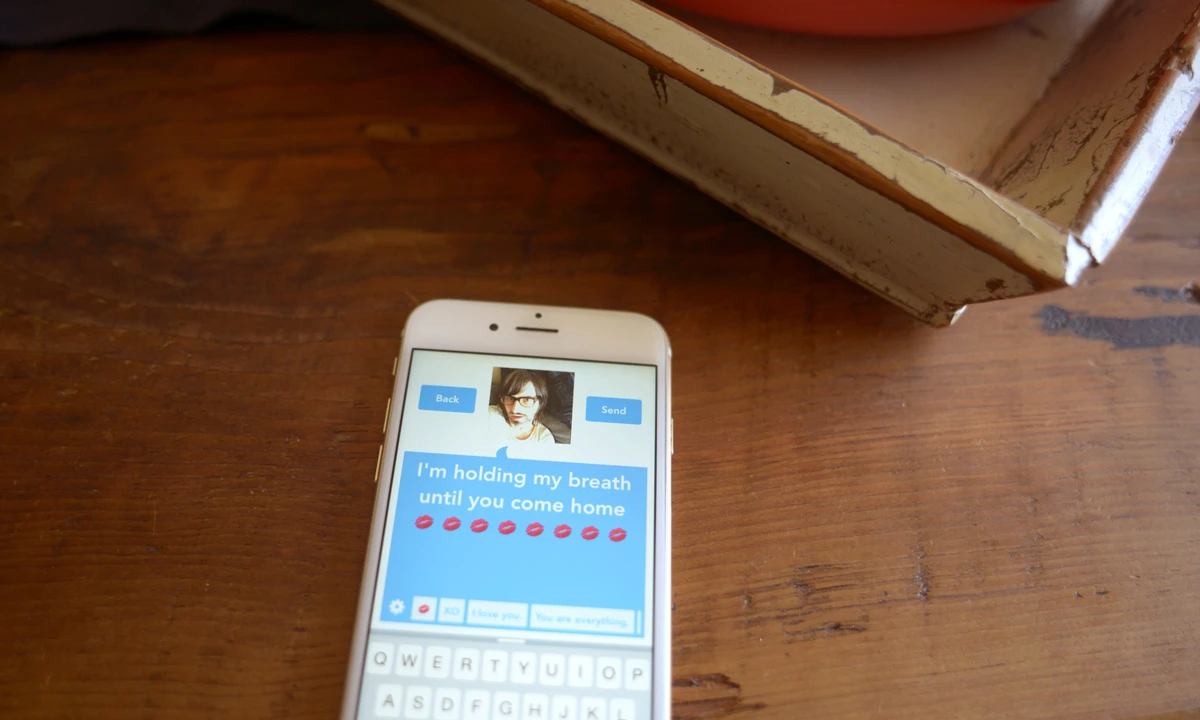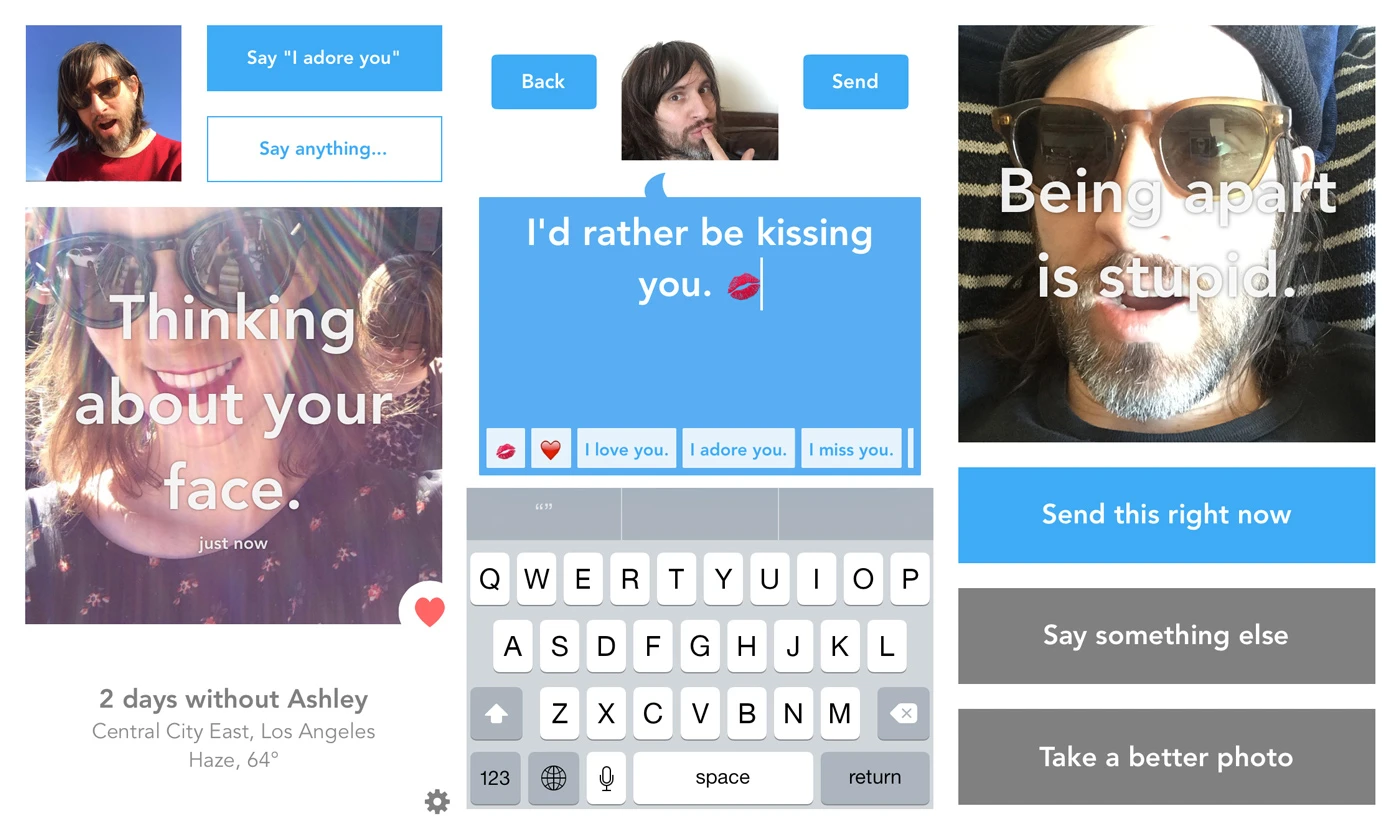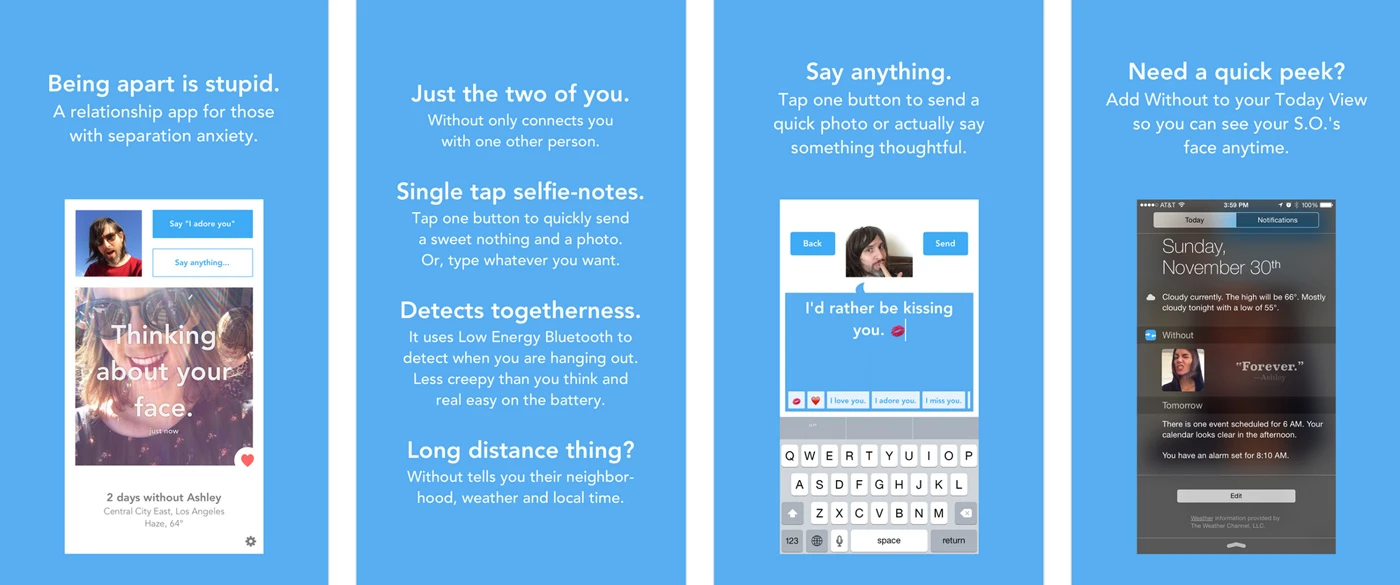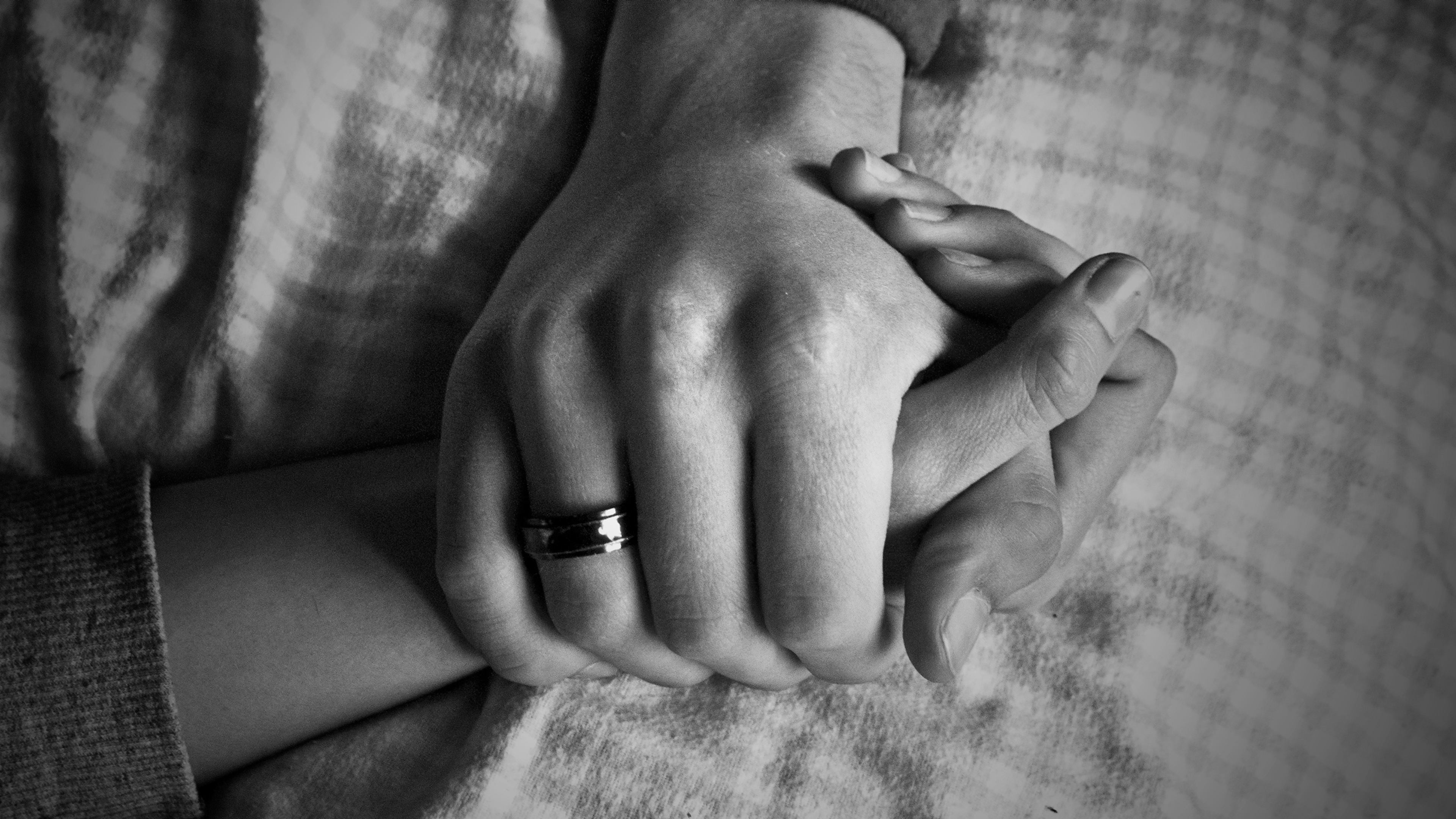“You’re marketing this wrong,” a Without user recently wrote to the app’s founder, Jeremy Schoenherr. “This app isn’t just good for long-distance relationships; it’s good for all relationships.” The user may be right, but Schoenherr feels fairly confident about Without’s target audience—those in committed, long-distance relationships—because these are people like him.
In spring of 2014, the 39-year-old developer’s girlfriend was offered her dream job in Los Angeles. At the time, the couple had been living together in New York City for four years; within a week, she was on the other side of the country. “We had our routines and lifestyles,” says Schoenherr. “All of that was disrupted.” They took turns visiting each other every few weeks, but in between, Schoenherr—who won an Apple Design Award for his work on Major League Baseball’s app, MLB At Bat, and has since worked with the group-texting app GroupMe—found himself longing not just for her, but also for an easier way to simply check in. “There was nothing that could let someone know you were thinking about them,” he says. Schoenherr looked at that hole (both in the market and in his day) and began to fill it with code.

“I couldn’t replace actual face to face to communication—it’s hard to show affection with an app. I was hoping to replicate that type of interaction as best as I could from 2,000 miles away,” he says. “The best way I could do that was by reducing the amount of time that it took to get your thought out. You’re passing your partner’s favorite restaurant, but you don’t want to type, ‘Saw this and it made me think of you.’”
Instead, you open Without, with its selfie-ready homescreen and take a quick shot in front of the beloved café. Without automatically attaches notes like “I miss you” (you can customize these) to photos. With a single tap, you can send your partner a visual and textual update—what users have taken to calling “a Without.” “There isn’t much overhead in expressing, ‘Thinking of you’ or ‘I love you’” or other sentiments couples tend to share, says Schoenherr. Since launching in February of 2015, the self-funded app has garnered 6,000 registered users and recently surpassed 100,000 notes sent.
Why not just use Facebook Messenger, Snapchat, WhatsApp, or plain old texting? ”The personal aspect is singular among applications; there’s only one person who shares the app with you,” says Fran, 26, a software developer in New York, who met her boyfriend nine months ago in his home country of Argentina. “It’s your own little chatroom that no one else can be a part of.”
“In many ways it solves the problem of doing one thing well,” says Oliver, a 40 year-old cancer researcher who, five months ago, took a job across the Atlantic ocean from his partner of two-and-a-half years. Organizing the logistics of their house back in Europe, as well as her eventual move to join him, Oliver and his partner were constantly jumping back and forth between Skype, iMessage, and the other communication apps. “It was nice having a separate channel just for ‘Hey, I love you,’” Oliver says. “That channel could have been anything, but I like this because it’s very focused. It doesn’t do anything but. It’s a very deliberate partnering: I just thought of you. I wasn’t just hanging out in WhatsApp and saw you.” When users discuss Without, “They call it ‘our’ app,” says Schoenherr. “It’s something that belongs to the relationship, as opposed to Snapchat, which is a platform for communicating with anyone you might know.”

Additionally, the chance of humiliating yourself with a misdirected message decreases dramatically with Without. “There’s no chance I’ll send a smiley face to my boss,” says Oliver, (an emoji misfortune which has befallen him more than once over text). As for the most private of messages, users were divided. “It’s good at night, for romantic stuff, too,” said Isabel, a 27-year-old human resources manager in Spain. Not so much for Mara, a 35-year old winemaker in South Africa whose significant other lives in the Bay Area. “Lol . . . GROSS . . . NO,” she wrote in an email.
Schoenherr certainly didn’t design the app with that in mind. What surprises Schoenherr is how many of Without’s users—approximately 20%—were using the app despite not being long distance. It has an appeal to people in relationships whose jobs and families make great demands of their time, especially military couples, as well as those clingy pairs who don’t like to feel apart for any length of time at all.
This last group brings one very lucrative demographic to mind: kids, specifically high school and college students. Theirs can be relationships at their most intense—where communication is frenetic and obsessive, and selfies are ubiquitous (and could well use Without’s protections; unlike texting, there is no history, no photos stored—if someone steals or hacks your phone, all they’ll get from Without is the last photo you received).

“Younger people will love this,” says Schoenherr, who recently changed the minimum age to download the app from 17-plus to 12-plus in the Apple Store. “You live with your parents; whoever you’re with is across town. I remember being on the phone for hours and hours.” While his intended market isn’t high schoolers, he can see it trickling down to that age group, naturally, from college-age users.
For now, he’s continuing to direct the app’s attentions to long-distance couples, and, with some notes from his users, improving the current features. The focus for Schoenherr is on balancing ease of use, the app’s cornerstone, with more features. The next version will allow you to send a stack of photos, not just one at a time, and for the future, he’s considering gifs. Videos and archiving capability are not currently on the agenda.
Without, of course, isn’t for every couple—not even necessarily ones that like it. “We’re not exactly romantic, but the app did make us say ‘I miss you’ way more than we’ve ever said in the past,” said Mara. “It was fun, but it would be better suited to people who are way mushier.” So be it—there are plenty of those.
Recognize your brand’s excellence by applying to this year’s Brands That Matter Awards before the early-rate deadline, May 3.
